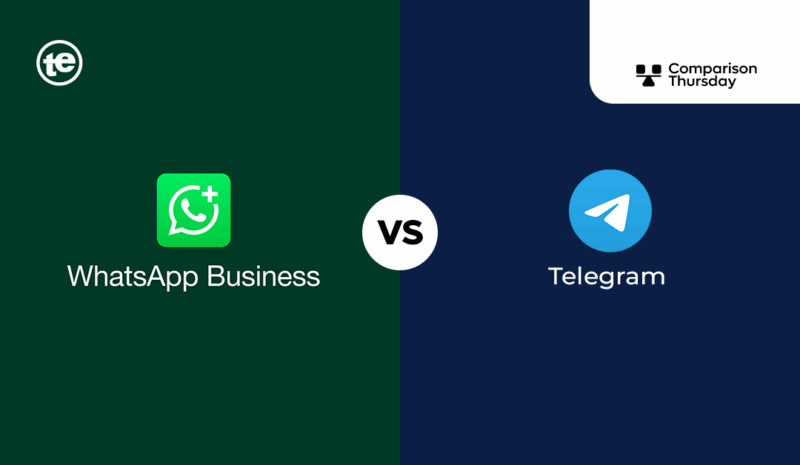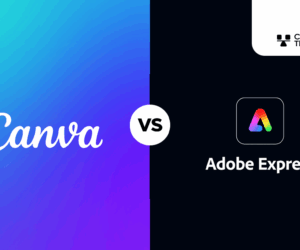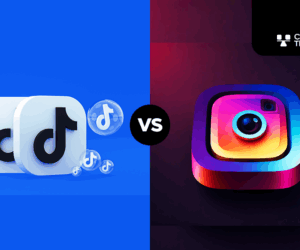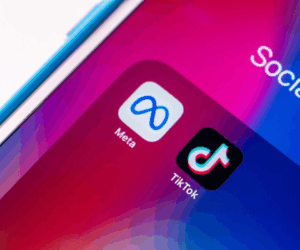Globally, the messaging platform stakes are high. For example, Telegram surpassed 1 billion monthly active users (MAUs) in March 2025.
Meanwhile, WhatsApp already has over 3 billion MAUs in 2025, with projections heading to ~3.14 billion by year-end.
For any small or medium-sized enterprise (SME) thinking about customer engagement and brand storytelling, that’s opportunity.
Every day your customers open apps, swap messages, and watch updates. If your brand isn’t in the right channel, you might just be invisible.
Today on brand comparison, we’re looking at two well-known competitors, WhatsApp and Telegram. We’ll compare them from the standpoint of customer engagement and brand storytelling, with a goal to help you decide which platform fits your brand’s voice, your community and your vision.
Owned by Meta Platforms, WhatsApp is everywhere. With over 3 billion users in 2025, it is the most used global messaging app.
In business mode, its dedicated apps (WhatsApp Business & Business API) have over 1.2 billion lifetime downloads.
Telegram
Telegram, founded in 2013, once niche and privacy-focused, has exploded. It hit ~1 billion MAUs in early 2025. It provides public channels, large communities and automation via bots.
Why this “quiet competition”?
Because these tools are evolving into platforms where brands tell stories, not just chat. SMEs usually treat messaging apps as one-more channel for support. But with these tools, you can build community, broadcast, and engage directly. Where you place your brand does matter.
Core Capacity & Feature Comparison for SMEs
Here’s how they stack up in terms of a brand that wants engagement + storytelling.
1. Reach & Audience
- WhatsApp: Huge global footprint; available in 180+ countries. Because many customers already “live” there, using WhatsApp may require less effort to reach them.
- Telegram: Smaller than WhatsApp in raw numbers, but quickly growing and especially strong among tech-savvy or globally dispersed communities. Some markets show very high penetration. For a brand looking to build a new community beyond its immediate locale, Telegram provides interesting reach.
If your brand’s community is primarily local, familiar with WhatsApp, that may be the safe option. If you’re aiming for global, cross-region, open-community storytelling, Telegram gives you more scope.
2. Engagement & Interaction
- WhatsApp: Primarily one-to-one or small group messaging. Business version supports quick replies, catalogues, broadcast lists. Because users open WhatsApp often (3–4 times per day) in many markets.
- Telegram: Supports large-scale one-to-many “channels”, huge public groups, file sharing, bots for automation, no heavy algorithm filtering of content.
For storytelling: Telegram lets you publish posts, updates, content that stays accessible; WhatsApp is more intimate, direct, conversational.
3. Storytelling & Brand Content
Storytelling means narrative, rich media, sustained engagement.
- On WhatsApp, you might run weekly updates, share behind-the-scenes via Status, respond personally to customers. But broadcast reach is limited (you rely on contact lists or groups).
- On Telegram you can build a channel of thousands, even tens of thousands, post multimedia updates, pin content, create bots or automated sequences. Because your messages go directly to subscribers, you avoid feed algorithms that bury your content.
So if your brand story is: “We’re a local crafts business, we want to talk personally to each customer, answer questions, build trust” → WhatsApp makes sense. If your story is: “We’re a thought-leader brand, we want to publish content, build a large audience, run community events” → Telegram has the edge.
4. Automation, Scale & Community Management
- Telegram: Very strong here. Bots, open API, large group sizes, flexible administration. Ideal if you want to scale to big audiences and automate.
- WhatsApp: Also provides Business API integrations, but with more limitations (device number, message templates, opt-in rules). Excellent for customer service, personal outreach. So if your brand wants to scale quickly with automation, Telegram might win. If you want high-touch personalised engagement, WhatsApp may serve better.
5. Privacy, Trust & Compliance
Trust is important for SMEs.
- WhatsApp uses end-to-end encryption by default in chats; its global scale and association with Meta raise regulatory questions. In the EU it has been classed as a “Very Large Online Platform.”
- Telegram offers encryption too, though not always default for all chats, and its business tools are still evolving.
From an SME perspective: if your customers care about privacy, both platforms are acceptable, but WhatsApp’s ubiquity may give you more trust on the ground.
6. Costs, Monetisation & Business Model
- WhatsApp generated estimated revenue of approximately $1.785 billion in 2024, mostly via WhatsApp for Business. Also spending on WhatsApp Business is projected to hit ~$3.6 billion by 2025.
- Telegram revenue in 2023 was ~$342 million, growing quickly.
For SMEs: WhatsApp has mature business tools but cost/messaging templates are important. Telegram offers lower barrier and greater freedom for broadcasting, but monetisation is less structured. Consider implementation effort, cost of maintenance, and whether you’ll need paid messaging or automation.
Use-Case Scenarios: Which Platform for What Type of SME/Brand Story
Let’s pick practical scenarios.
- Local service business in Lagos (e.g., an artisan workshop)
Needs to build personal trust, answer queries, send reminders, and share pictures of finished work. WhatsApp Business suits perfectly. Direct, familiar, high open-rate. - Creator brand/online education brand (global audience)
Wants to publish weekly content, build community, run live sessions, and sell subscriptions. Telegram Channel + bots is the stronger fit. You can send broadcast content, automate sign-ups, and manage large audience. - Hybrid approach
Why pick one? Use WhatsApp for customer support, one-to-one conversations. Use Telegram for broadcast storytelling (company updates, insider content, community events). Each platform handles a different job.
Regional & Market Considerations (with focus on Nigeria/Africa)
In Nigeria and Africa at large, Many users already use WhatsApp daily for personal communication. Using WhatsApp means you meet customers where they are.
Telegram is growing but may lag local adoption depending on segment. According to research, Telegram has strong uptake in countries like Nigeria, Malaysia, Indonesia. For a Lagos-based SME, the choice may depend on your target audience: if they’re urban, tech-savvy, globally oriented, Telegram works. If they’re local, mobile-first, WhatsApp might be better.
Also consider data costs, phone compatibility, and feature familiarity. If you assume your audience might not download and consistently engage with a new platform, going with WhatsApp is safer.
Challenges, Risks & Pitfalls
No platform is perfect.
- WhatsApp: Broadcast reach is limited; heavy reliance on contact lists; group size and broadcast list size constraints. Also, because everyone uses it, noise is high and users may ignore brand messages if they feel spammy. Being “just chat” may limit narrative depth.
- Telegram: Community building demands content discipline. Having a large channel is one thing; keeping subscribers engaged is another. Also, in some markets, Telegram may have lesser penetration, so your reach could be weaker. Automation requires skill; if mishandled you risk disengagement.
- Spam & trust risk: Both platforms have misuse potential. For example, WhatsApp has been used for fraudulent message campaigns. If your brand uses messaging badly, you risk being ignored or marked as spam.
- Compliance/regulation: WhatsApp’s size means it is under regulatory eyes (e.g., EU rules). Telegram, with less centralised control, may raise questions about moderation. SMEs must ensure opt-in, respect privacy laws, manage data properly.
- Content fatigue: Sending too many messages, poor quality content, or irrelevant updates can kill engagement fast. On Telegram you may publish to large numbers, but if you publish too irregularly or too often without value, people unsubscribe.
Mitigation: treat each channel, both WhatsApp and Telegram, like media, plan schedule, content calendar, varied formats, monitor metrics, adapt.
Recommendations & Strategy Framework
Here’s a roadmap for SMEs to decide and act.
Step 1: Audit your audience and communication needs
- Where are your customers now? WhatsApp? Telegram? Both?
- Do you want direct support (one-to-one) or community building/broadcast (one-to-many)?
- What resources do you have (time, content, automation ability)?
Step 2: Choose your platform(s)
- If your brand’s priority = direct interaction, local service, WhatsApp is priority.
- If priority = broader narrative, content publishing, community growth, Telegram is strong.
- Consider using both: each for a distinct role.
Step 3: Content strategy
- For WhatsApp: set up a Business profile, define broadcast list strategy, schedule updates, use rich media (images, short videos), keep it conversational.
- For Telegram: establish a channel name, content themes (story arcs, behind-the-scenes, exclusive updates), schedule posts, possibly integrate a bot for registrations/feedback.
Step 4: Engagement/automation plan
- Use automation where sensible (quick replies, FAQs) but avoid losing human touch.
- On Telegram you can use bots for subscriptions, polls, and user-generated content.
- On WhatsApp, you may keep direct responses for high-value queries, and broadcast for regular updates.
Step 5: Measurement & refinement
Track metrics like: open/view rate (on Telegram channel posts you can see views), reply rate, unsubscribe/leave rate, conversion rate (e.g., from message to sale or booking).
Refine: If a broadcast sees low views, tweak time or content. If you see unsubscribes, review frequency. Over time you’ll know which platform is giving better ROI.
Example: A fictional Lagos‐based boutique “Elegance Lagos”
- Use WhatsApp Business to send appointment reminders, new arrival photos, one-to-one styles advice.
- Launch a Telegram Channel “Elegance Community” where you post weekly style stories, behind-the-scenes, customer spotlight, teaser previews, create a poll for next collection.
- Measure: WhatsApp replies and bookings; Telegram channel growth and click-through to website.
So, both WhatsApp and Telegram are solid, but they serve different purposes for the SME brand. If I had to pick one, I’d say: for immediate, direct customer engagement and trust building, go with WhatsApp.
For building a larger scale brand narrative, community and broadcast capability, go with Telegram. But the smartest brands will use both, with clear roles for each.
Don’t treat either as just “chat” platforms. Treat them as storytelling platforms. Because your customers are not just messaging, they’re expecting experience, community and value.
And in this competition of channels, WhatsApp and Telegram, the winner will be the brand that sells where its audience already lives.
Now: you are ready. Pick your platform, set your plan, start telling your story.











